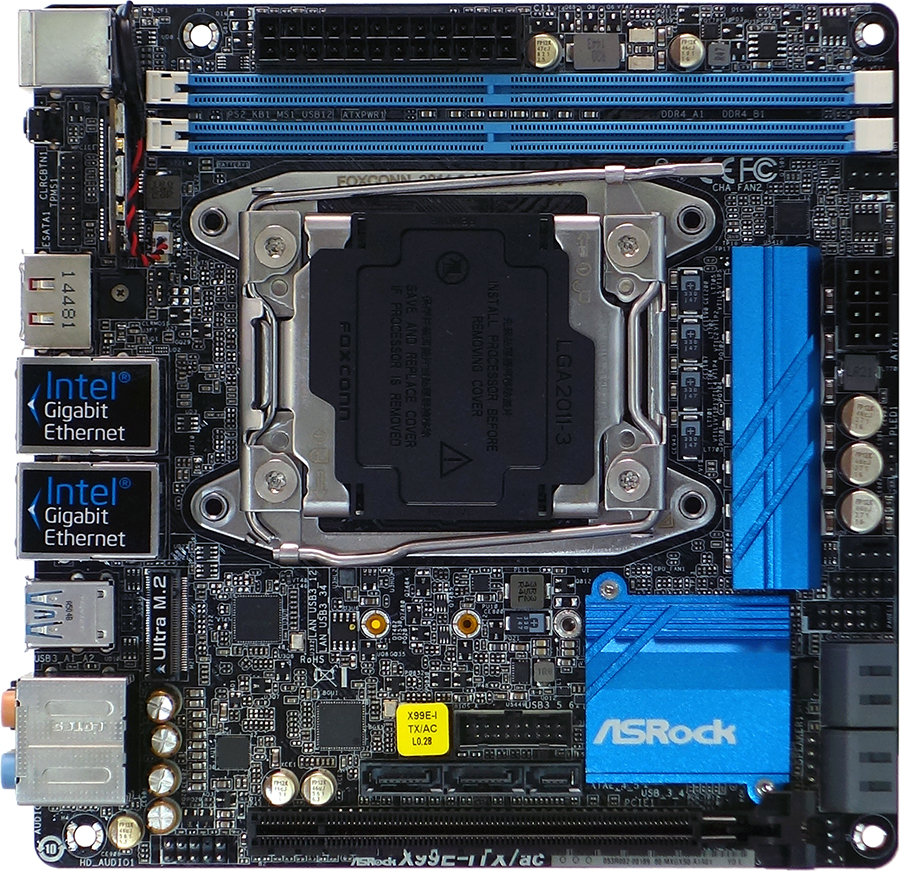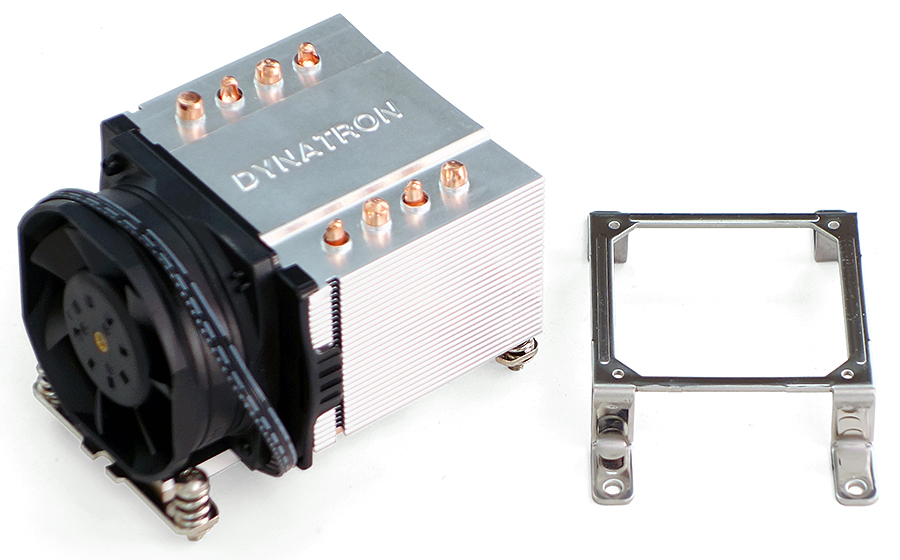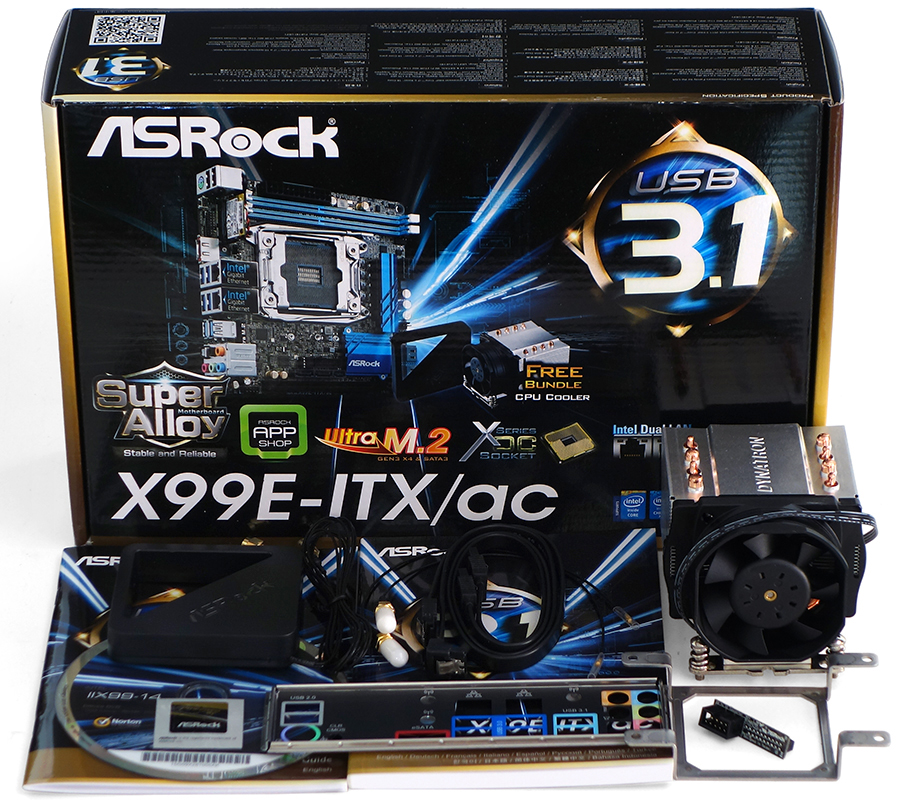ASRock X99E-ITX/ac Motherboard Review
Why you can trust Tom's Hardware
X99E-ITX/ac Details
The X99E-ITX/ac’s greatest design weakness may be those four pins at the leading edge of the PCIe x16 connector, according to my colleagues. It’s a fan header, and the connectors of some fans won’t fit under some graphics cards. Mine fit, but it did smash the wires flat against the top of the plastic, and there’s always a chance that their fan plugs were taller than mine. It’s also one of three connectors though, where many mini-ITX boards only have two.
My biggest concern instead is the rectangular "narrow ILM" cooler mount, which is an alternative specification previously defined for tightly-spaced multi-socket server boards. Where will we find a cooler?
That’s right, ASRock actually includes a cooler with the X99E-ITX/ac! Designed for 2U servers, this little thing is pretty amazing, beginning with its specs. Dynatron says its 60x28mm fan produces 47.5 decibels at 7000 RPM, but our measurements show that it spins all the way up to 7500 RPM, producing a whopping 54 decibels in the process. Thankfully, non-overclockers don’t need to worry about it generating much more than 33 decibels as long as they don’t run an extended full load. And since heavy workloads are the reason you bought an X99 platform for your mini-ITX case, ASRock also includes a liquid cooler mounting bracket for Cooler Master’s Seidon 120V. Other readily-available upgrades include Dynatron’s R27, which is an 80mm alternative to the included cooler. Cooler Master may be the real winner here.
Accessing the M.2 connector immediately adjacent to the CPU socket requires a narrow CPU cooler. We found several big-air coolers that provide enough clearance, but can’t be screwed down due to the unusual mounting pattern. The USB 3.0 header just south of the M.2 mounting screws would provide even more heat sink clearance, if only more cooling options were available to take advantage of the space.
Shown in the motherboard images, the X99E-ITX/ac includes a separately-wrapped mini-PCIe Wi-Fi card in addition to the parts shown. The installation kit’s greatest weakness might be its inclusion of only two SATA cables, though a USB 3.0 to USB 2.0 adapter points to the motherboard’s single USB 2.0 header in a market where more than two ports are often needed.
Get Tom's Hardware's best news and in-depth reviews, straight to your inbox.
Current page: X99E-ITX/ac Details
Prev Page Technical Specifications Next Page Firmware And Software


